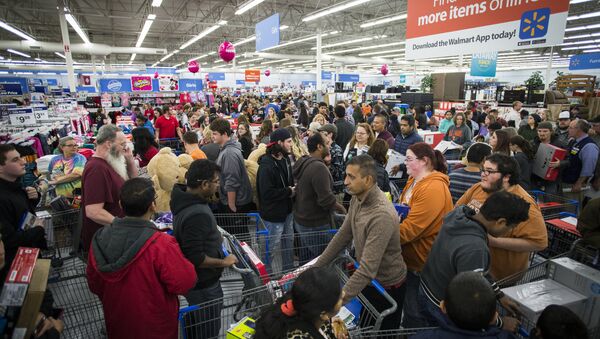Kristian Rouz — Ahead of the Black Friday sales season, stock investors are betting against the brick-and-mortar segment, anticipating low foot traffic and poor performance of traditional shopping malls. However, despite record-high store closures and the significant rise in online sales, brick-and-mortar retailers are trying to adapt to the new reality, and these attempts are not always unsuccessful.
Since the start of this year, traditional retailers have announced they would close over 6,700 retail locations across the country by year's end, according to a report from Fung Global Retail & Technology.
Amongst the retail chains downsizing their brick-and-mortar operation are Kmart, JCPenney, Gap, Banana Republic and Staples — meaning traditional sales are on the decline across multiple categories of consumer goods.
Apparel and electronics are hit most by the rise of e-commerce, however, traditional retailers are facing similar challenges to their operations and store closures are not necessarily an indication of their imminent decline.
"Online penetration is about 10 percent right now so there is a long way ahead for the strategy in our opinion," Michael Sapir of CEO of Bethesda, MD-based ProShare Advisors said. "A minority of brick-and-mortar will be able to make the transition and it is going to be expensive and painful."
The share of e-commerce was at 10 percent of total retail sales the previous year as well, and has barely increased year-to-year. Meanwhile, US consumer sentiment measures have been posting sustainable improvements over the past 12 months — yet, traditional retailers are still closing their doors.
According to the data from Moody's Investors Service, the largest 19 US retailers have "well over" $3.7 billion in debt due in the next five years, and some 30 percent of that debt burden is due by the end of 2018.
"It's putting a lot of stress on a number of retailers as they try to figure out how they can profitably invest and compete," Michael Brown of A.T. Kearney's consumer products and retail practice says.
Subsequently, chain stores are closing retail locations and dismissing employees in order to accumulate capital, and be able to meet their debt obligations. Only the most profitable retail locations survive, plus, the closure of large amounts of outlets in densely-populated areas drives foot traffic to the remaining locations, boosting their profitability.
This comes as only a minority of customers switch to e-commerce; meaning this year's store closures is a process different in nature than the crisis collapse nine years ago.
READ MORE: Former 'Economic Hitman' to Sputnik: US Uses Loans to Control Other Countries
Many retailers accumulated significant debt burden in the Obama years due to the low interest rates and credit-fuelled expansion of the consumer market. Most of them were sure the Obama-era economic policies would last for over a decade. However, as the rates go towards normalization, and President Trump pushes forward with a non-credit-fuelled, supply-side model of economic growth, those in debt are mobilizing their resources.
All this, to the disadvantage of the average consumer, who now has to drive for hours to go to the mall.
Some are pessimistic about brick-and-mortar, feeling it is bound to fail due to its irresponsible debt accumulation in the Obama years.
"The retail industry is going to be an apocalypse," Glen Kacher of Light Street Capital Management said. "Anyone working in the consumer retail industry should be training for a new job."







